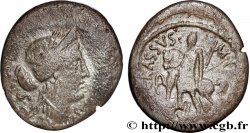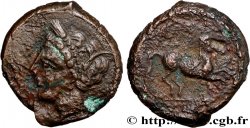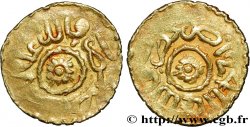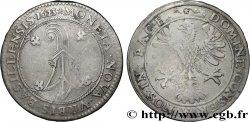v21_2202 - LICINIA Denier
MONNAIES 21 (2004)
Prezzo di inizio : 200.00 €
Valutazione : 400.00 €
Prezzo realizzato : 217.00 €
Numero di offerte : 2
Offerta maxima : 320.00 €
Prezzo di inizio : 200.00 €
Valutazione : 400.00 €
Prezzo realizzato : 217.00 €
Numero di offerte : 2
Offerta maxima : 320.00 €
Tipo : Denier
Data: 55 AC.
Nome della officina / città: Roma
Metallo : argento
Titolo in millesimi : 950 ‰
Diametro : 22 mm
Asse di coniazione : 4 h.
Peso : 4,17 g.
Grado di rarità : R1
Commenti sullo stato di conservazione:
Flan très large, complet des deux côté avec les grènetis visibles. Très beau portrait. Petite faiblesse de frappe au revers sur la Gaule. Patine de médaillier à reflets dorés
N° nelle opere di riferimento :
Diritto
Titolatura diritto : SC.
Descrittivo diritto : Buste diadémé, lauré et drapé de Vénus à droite avec boucles d’oreille et collier.
Traduzione diritto : “Senatus Consulto”, (avec l’accord du Sénat).
Rovescio
Titolatura rovescio : P. CRASSVS - M. - F..
Descrittivo rovescio : La Gaule debout de face devant son cheval qu’elle tient par la bride de la main droite et une longue javeline de la main gauche ; bouclier et cuirasse à ses pieds.
Traduzione rovescio : “Publius Crassus Marci Filius”, (Publius Crassus fils de Marcus).
Commento
Poids lourd. Pour ce type, M. Crawford a relevé une estimation de 63 coins de droit et de 70 coins de revers. Ce denier n'a pas été copié ou imité par les Gaulois. Il se rapporte néanmoins à la Guerre des Gaules et à l'un de ses acteurs. Publius est le fils cadet de Crassus et le frère de Marcus Licinius Crassus qui succéda à Publius, comme lieutenant de César, en tant que questeur. Publius Licinius Crassus avait participé à la campagne contre les Germains d'Arioviste en 58 avant J.-C. et à la soumission des tribus de l'Armorique l'année suivante avant de mener une brillante campagne en Aquitaine. Rentré à Rome en 56 avant J.-C., il trouva la mort en combattant les Parthes avec son père. Il est plusieurs fois cité dans le De Bello Gallico, dans les trois premiers livres : I, 52 ; II, 34 ; III, 7, 8, 9, 11, 20 à 27.
Heavyweight. For this type, Mr. Crawford noted an estimate of 63 obverse dies and 70 reverse dies. This denarius was not copied or imitated by the Gauls. It nevertheless relates to the Gallic Wars and one of its actors. Publius is the younger son of Crassus and the brother of Marcus Licinius Crassus who succeeded Publius, as Caesar's lieutenant, as quaestor. Publius Licinius Crassus had participated in the campaign against the Germans of Ariovistus in 58 BC and in the subjugation of the tribes of Armorica the following year before leading a brilliant campaign in Aquitaine. Returning to Rome in 56 BC, he met his death fighting the Parthians with his father. He is mentioned several times in De Bello Gallico, in the first three books: I, 52; II, 34; III, 7, 8, 9, 11, 20 to 27
Heavyweight. For this type, Mr. Crawford noted an estimate of 63 obverse dies and 70 reverse dies. This denarius was not copied or imitated by the Gauls. It nevertheless relates to the Gallic Wars and one of its actors. Publius is the younger son of Crassus and the brother of Marcus Licinius Crassus who succeeded Publius, as Caesar's lieutenant, as quaestor. Publius Licinius Crassus had participated in the campaign against the Germans of Ariovistus in 58 BC and in the subjugation of the tribes of Armorica the following year before leading a brilliant campaign in Aquitaine. Returning to Rome in 56 BC, he met his death fighting the Parthians with his father. He is mentioned several times in De Bello Gallico, in the first three books: I, 52; II, 34; III, 7, 8, 9, 11, 20 to 27








 Segnalare un errore
Segnalare un errore Stampate la pagina
Stampate la pagina Condividi mia selezione
Condividi mia selezione Fai una domanda
Fai una domanda Consegnare / vendere
Consegnare / vendere
 Descrittivo
Descrittivo










